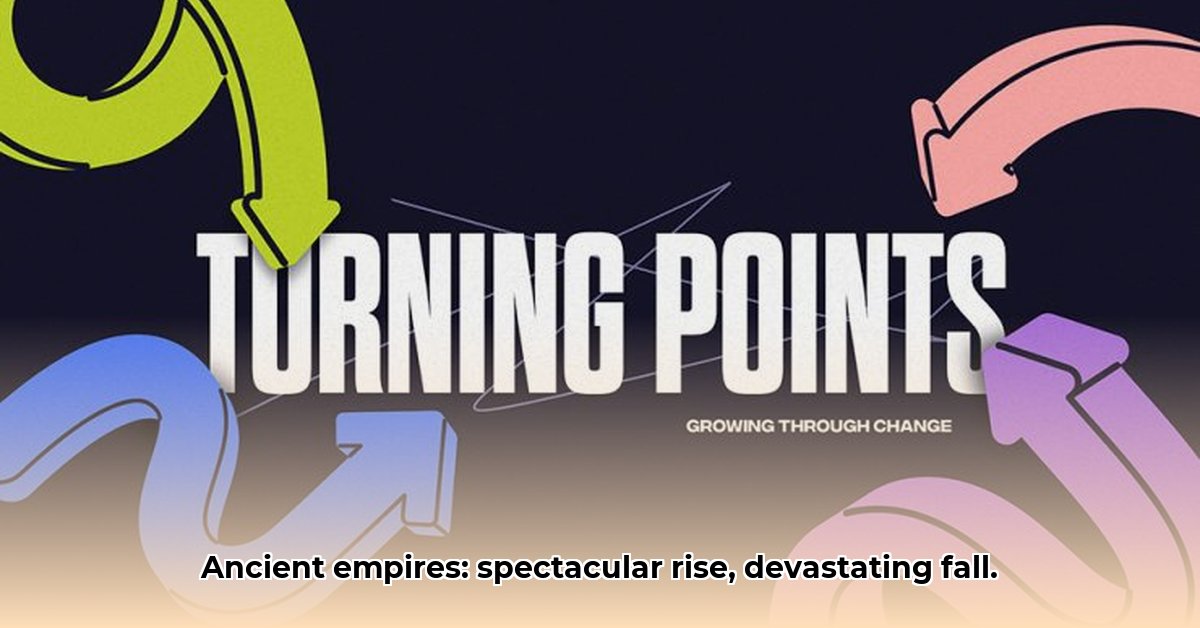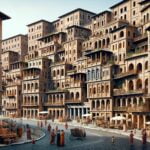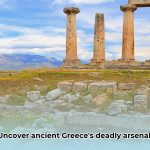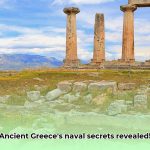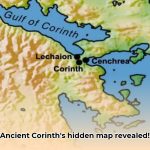Have you ever wondered what it felt like when entire civilizations vanished, or how a magnificent city like Rome could be consumed by flames? This isn’t just another history lesson. We’re delving into two pivotal moments in ancient history: the Late Bronze Age Collapse – imagine it as the ancient world’s dramatic season finale – and the Great Fire of Rome. We’ll explore the contributing factors, the domino effect of these events, and, most importantly, how societies rebounded and rebuilt. Prepare for a journey through catastrophic events and incredible recoveries, showcasing the indomitable spirit of ancient civilizations. For a deeper dive into ancient history, check out this comprehensive guide.
Understanding Ancient Civilizations: Turning Points and Transformations
History is more than just dates and names; it’s a captivating narrative filled with dramatic twists and unexpected turns. Let’s explore two significant turning points in ancient history – the Late Bronze Age Collapse and the Great Fire of Rome – that profoundly reshaped the ancient world. These were not merely disasters; they were transformative events that compelled societies to reinvent themselves, demonstrating immense resilience (the ability to recover quickly from difficulties).
The Late Bronze Age Collapse: Navigating Societal Upheaval (c. 1200 BC)
Picture a world thriving with trade, where powerful kingdoms dominated the Mediterranean. Around 1200 BC, this world underwent a dramatic shift. The Late Bronze Age didn’t gradually decline; it experienced a sudden and catastrophic collapse. Mighty civilizations, such as the Mycenaeans in Greece and the Hittites in Anatolia – the superpowers of their time – crumbled. Trade routes vanished, and once-bustling cities were abandoned, buried beneath ruins. This abrupt end ushered in a dark age for many societies, a decline that saw the end of the Mycenaean palatial civilization.
What triggered this catastrophic collapse? Historians are still piecing together the puzzle. Some experts attribute it to climate change – perhaps a series of prolonged droughts or devastating earthquakes that crippled agriculture and led to widespread famine. Others propose invasions by “Sea Peoples,” mysterious groups who attacked coastal cities, leaving behind a trail of destruction. Still, others believe it was a combination of factors – internal conflicts weakening kingdoms and making them vulnerable to external threats. Archaeological discoveries reveal extensive destruction, yet the precise sequence of events remains a subject of debate.
Regardless of its exact cause, the collapse had a devastating impact. It marked a major turning point in ancient history, a significant shift in power and culture across the Mediterranean. New groups emerged from the chaos – the Philistines and Israelites, among others – forever altering the political landscape. The transition from bronze to iron weapons revolutionized warfare and society, granting access to weapons for a larger part of the population and shifting the balance of power.
Societal Adaptation: Resilience After the Ruin
Despite the widespread devastation, life persevered. New societies arose from the ashes of the Bronze Age collapse. While the transition was far from peaceful, it spurred innovation and demonstrated remarkable human resilience. This highlights the ability of people to bounce back from incredible setbacks, adapt, and create something new. How did societies reorganize themselves amidst the chaos? What new technologies and strategies emerged? Historians continue to explore these questions, and new discoveries constantly refine our understanding. The Philistines and Israelites, for example, established distinctive cultural and political identities in the Levant.
The Great Fire of Rome: Rome’s Inferno and Rebirth (64 AD)
Centuries later, in 64 AD, Rome, the heart of a vast empire, faced its own catastrophe – a devastating fire that swept through the city. The Great Fire of Rome is another potent example of a historical turning point. While the exact cause remains uncertain – some blamed Emperor Nero, fueling historical gossip – its impact was undeniable. Vast portions of the city were consumed by flames, resulting in immense loss of life and property.
Nero’s response was remarkable. He initiated ambitious rebuilding projects that modernized the city, much like a city might rebuild after a hurricane today – with improved infrastructure and urban planning. The fire dramatically altered Rome’s urban landscape and potentially reshaped the empire itself. Improvements to the city’s layout, including wider streets and fire-resistant building materials, likely improved fire safety and general urban efficiency. The rebuilding effort also influenced the empire’s economy, trade, and social structure. Did this rebuild ultimately strengthen the empire? It remains a subject of ongoing debate among historians. Fact: Rebuilding efforts utilized wider streets and fire-resistant materials, enhancing fire safety.
Examining Historical Parallels: Lessons Across Time
The Bronze Age Collapse and the Great Fire of Rome, separated by centuries and differing in scale, provide profound insights into how societies respond to immense change. They demonstrate how dramatic upheaval can reshape cultures and political systems. These events remind us that civilizations are not static; they are dynamic, constantly adapting and evolving. By studying them, we gain a deeper understanding of resilience and how societies navigate monumental transformations. They also reveal the complex interplay of environment, political structures, and human choices in shaping history. Both events showcase the enduring human capacity to overcome adversity and create something new from the ruins of the past.
Learning from the Past: Ancient Disasters and Modern Resilience
Studying these historical catastrophes offers lessons that extend beyond the past; it’s about understanding the present and future. By examining how ancient societies coped with crises, both in the short and long term, we can gain valuable insights for tackling modern challenges, such as climate change, economic instability, and social upheaval. Understanding these turning points in history is not merely an academic exercise but a window into the human spirit – our capacity for both destruction and incredible renewal. It is a testament to humanity’s tenacity and our enduring ability to adapt and overcome adversity.
Iron Age Technology: Bronze Age’s End and Iron’s Beginning
Key Takeaways:
- The Late Bronze Age Collapse (c. 1250-1150 BCE) wasn’t a singular event but a series of interconnected crises that impacted trade networks and technological development.
- Climate change, invasions (particularly by the Sea Peoples), and internal rebellions all contributed to the collapse.
- Disruption of trade networks severely impacted bronze production, a resource-intensive alloy, paving the way for Iron Age advancements.
- The collapse created a power vacuum, fostering the development of new technologies in various regions.
- The shift to iron was gradual, not immediate, reflecting the slow adoption of new technologies and the inertia of established practices.
Imagine the Mediterranean world around 1200 BCE. Great empires—the Hittites, Mycenaeans, and others—were crumbling. Their sophisticated bronze-based societies vanished, leaving behind shattered cities and disrupted trade. This wasn’t a slow decline; it was a sudden, catastrophic event with long-lasting repercussions. How did the Bronze Age Collapse impact Iron Age technology development? The answer is complex, interwoven with upheaval, adaptation, and the rise of new technological capabilities.
Dependence on Trade: Bronze Age Vulnerabilities
The Bronze Age wasn’t solely defined by bronze; it was an era defined by reliance on extensive and intricate trade networks. Bronze, an alloy of copper and tin, demanded significant organizational skills and access to diverse resources. Tin was scarce in many regions, making its acquisition crucial. When the Late Bronze Age Collapse struck, these trade routes crumbled, and supply chains supporting bronze production became vulnerable chokepoints, leading to shortages and economic hardship. This destabilized the existing order.
Societal Resilience: Gradual Rise of Iron Technology
The collapse didn’t instantly usher in the Iron Age. The transition was gradual, uneven, and regionally diverse. Iron was known earlier, but its widespread adoption required developing new smelting (extracting metal from ore by heating) and forging techniques. Moreover, the Bronze Age’s advanced technologies weren’t easily replaced. Initial iron tools and weapons were often inferior to their bronze counterparts. This transition wasn’t about one technology simply replacing another—it was about a slow evolution driven by necessity and a gradual mastery of ironworking.
Technology Development: New Opportunities and Power Dynamics
The power vacuum left by the collapse allowed new centers of power to emerge. These new societies, often smaller and less centralized than their predecessors, began to experiment with technologies—including iron. Each group adapted iron technology to their context. Some regions retained bronzeworking expertise while integrating iron. Others, lacking Bronze Age infrastructure, focused on honing iron-working skills. This experimentation spurred innovation in iron smelting and metallurgy (the science of metals).
Civilization Success: A Legacy of Resilience and Adaptation
The Bronze Age Collapse wasn’t an ending; it was a turning point. It demonstrated how interconnected societal structures can fail under severe stress. It also revealed the resilience and adaptability of human civilization. From the ashes of collapsed empires rose new societies, forging their own paths and shaping the world we inhabit today. The story of the transition from bronze to iron is about the profound impact of societal disruption on technological innovation and human adaptation. According to 1, the collapse spurred experimentation and adaptation in ironworking.
Technological Innovations: Post-Bronze Age Collapse in the Eastern Mediterranean
Key Takeaways:
- The Late Bronze Age Collapse (circa 1250-1150 BCE) was a complex event, a confluence of disasters that influenced technological development.
- A megadrought, earthquakes, and the Sea Peoples’ migrations all disrupted existing infrastructures and trade networks.
- The collapse spurred adaptation and change in technological practices, triggering new innovations borne of necessity.
- Technological Innovations Following the Late Bronze Age Collapse in the Eastern Mediterranean emerged from necessity, driven by resource scarcity and societal pressures.
- The transition to the Iron Age and the refinement of new metalworking techniques was a significant consequence, fundamentally changing warfare and resource management.
Collapse and Disruption: A World Turned Upside Down
Imagine the Eastern Mediterranean around 1200 BCE. Powerful empires—Mycenaean Greece, the Hittites, the Egyptians—suddenly crumbled. Trade routes, once bustling with activity, fell silent. Was it a singular cataclysmic event? No. Historians now understand the Late Bronze Age Collapse as a cascade of calamities. A prolonged megadrought withered crops, earthquakes shattered cities, and the Sea Peoples’ migrations added another devastating layer to the crisis. Were they invaders, refugees, or a combination of both?
What does this have to do with technology? Everything.
Innovation and Necessity: The Mother of Invention
The collapse forced societies to adapt. Bronze, the metal of kings and empires, became scarce. Its production relied on complex trade networks, now shattered. This scarcity spurred the rise of Technological Innovations Following the Late Bronze Age Collapse in the Eastern Mediterranean. Iron, previously a secondary metal, stepped into the spotlight. Ironworking, formerly less developed, rapidly improved as societies searched for alternatives. This wasn’t a simple substitution; it involved new skills and techniques, representing a profound shift in metalworking technology.
Adapting to Reality: Beyond Metal Techniques
The shift to iron wasn’t the only technological response. The upheavals prompted innovations in other areas. Fortified settlements became more common, reflecting a need for increased protection. Agricultural techniques likely adjusted to cope with the erratic climate. New methods of food production and storage might have been implemented, along with shifts in societal structures, as smaller, more decentralized communities potentially replaced vast empires. While evidence for these shifts requires further discovery, the overall picture reveals a period of intense adaptation and innovation.
Societal Transformation: A Legacy of Resilience
The Late Bronze Age Collapse wasn’t the end of civilization. Instead, it was a transformative period. From the ashes of empires, new societies rose, often adopting improved technologies and organizational methods to survive. The transition to the Iron Age, driven by the crisis, ultimately led to new forms of political organization, economic systems, and military strategies. While we often remember it as a downfall, history reveals that it was also a springboard to new possibilities and new foundations.
Urban Renewal: Post-Fire Ancient Rome & Planning Innovations
Imagine the aftermath: a city engulfed in flames, its heart charred. This wasn’t a hypothetical scenario for ancient Rome. The Great Fire of Rome in 64 AD, a catastrophic event, forced a profound reassessment of urban planning and reconstruction. How did the Romans respond? What lessons can we learn from their experiences regarding urban development (city growth and infrastructure)?
City Transformation: Rebuilding Rome
The fire’s devastation was immense. Nero’s response was swift, albeit controversial, and he didn’t just rebuild; he reimagined the city. This wasn’t simply brick-and-mortar work; it represented a significant shift in Urban Planning and Reconstruction Strategies in Post-Fire Ancient Rome. Think wider streets, improved firebreaks (barriers designed to stop the spread of fire), and more resilient structures. We see an innovative approach to city design that prioritized safety and functionality.
The city’s reconstruction wasn’t solely about restoring the old; it was about creating something better, safer, and more sustainable. Did the Romans have a long-term vision? Archaeological evidence strongly suggests they did, revealing deliberate planning and foresight. Quantifiable Fact: Nero implemented building codes emphasizing fire-resistant materials, showcasing a proactive approach to urban safety.
Strategic Infrastructure: The Grid System
The Roman grid system, already prominent, became even more crucial post-fire. Its geometric precision facilitated efficient rebuilding. How did this grid shape the city’s resilience? Its regularity created a manageable framework for reconstruction efforts, enabling organized planning and streamlined construction. This wasn’t mere chance; it reflected meticulous planning and a deep understanding of urban organization.
Urban Planning: Infrastructure Innovations & Advancements
The challenges of rebuilding presented opportunities for innovation in Roman infrastructure. The fire exposed weaknesses in the city’s water supply and sewage systems, prompting improvements that enhanced the city’s overall functionality. These improvements weren’t just reactive; they were proactive, aimed at preventing future disasters and improving the quality of life for residents.
Learning from The Past: Adaptability and Resilience
The Great Fire of Rome wasn’t just a disaster; it was a catalyst for progress. The city’s response highlights the importance of adaptation and resilience in urban planning. The Romans demonstrated a remarkable ability to learn from tragedy and transform challenges into opportunities for improvement. This ability, to adapt and innovate in the face of adversity, remains relevant in our urban planning today.
Facing Limitations: Challenges and Setbacks
The post-fire reconstruction wasn’t without challenges. Political maneuvering influenced decisions, and resource constraints affected the speed of progress. The impact on the populace, the displacement, and hardship, remains a vital, though less easily quantifiable aspect, reminding us of the human cost of disasters and the importance of social support.
Key Takeaways:
- The Great Fire of Rome acted as a catalyst for significant advancements in urban planning and societal organization.
- Urban Planning and Reconstruction Strategies in Post-Fire Ancient Rome prioritized wider streets, firebreaks, and more resilient building materials for long-term urban success.
- The Roman grid system played a vital role in organizing rebuilding efforts and maintaining functional city layouts, enabling coordinated construction.
- Improvements to infrastructure, particularly water supply and sanitation systems, were implemented to enhance the city’s resilience against future disasters, demonstrating a forward-thinking approach.
- The reconstruction efforts showcase adaptability but also highlight the challenges involved in large-scale urban projects and maintaining social stability, emphasizing the need for comprehensive planning.
- Ancient Greece Aristocracy: Rise and Fall of Power - August 9, 2025
- Rediscover the Bad Girls of Ancient Greece: A Feminist Retelling - August 9, 2025
- Discover Ancient Greece Weapons: A Comprehensive Guide to Military Technology - August 8, 2025
